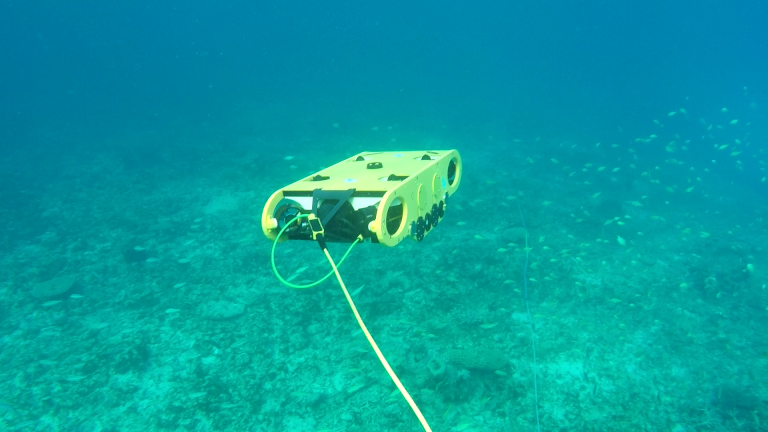Bubot
Better Understanding Biodiversity changes thanks to new Observation Tools
Project Description
Although oceans offer more than 60% of ecosystem services to humans, we still ignore most of its biodiversity and its natural resources. Consequences of this ignorance are broad and problematic in the current context of global changes.
One of the greatest challenges is to assess environmental health, which often requires large amount of data extremely difficult and expensive to acquire because of the technical difficulties to work in such a large and complex environment. Thus, the BUBOT project, through an interdisciplinary approach, proposes the development of new and innovative tools for marine biodiversity observation and their usage to evaluate anthropic impact on marine reef environment. This environmental assessment is coupled to human densities and activities data as well as an anthropology study on the practices, culture and knowledge on fishing resources.
The BUBOT project proposes to study 3 main hotspots:
- Mayotte
- The Scattered Islands
- The Mozambique coast.
Available underwater robots and technics do not answer the needs of marine biologists for efficient and autonomous environment assessment. They need small autonomous robots without communication and energy supply cables that are able to perform complex missions. In that context, the robot must become fully autonomous and reliable.

Our work
Our team work on the vision system of the robot, both on the hardware and software approaches. We aim at building a fully functional modular underwater stereovision system, allowing the robot to complete the three following functionnalies:
- Detect the surrounding environment, and especially localize obstacles.
- Record a video data for offline processing and fishes identification.
- Provide an estimated displacement vector to the localization algorithm.
The difficulty is to consider in only one vision system, fully integrated with the planning and control systems of the robot, both the specific caracteristic of the underwater environment (turbidity, specific lighting conditions and reflections, optical deformations, etc.) as well as integrate the difference of the working conditions of these 3 tasks: working distances, on/off line computing, real time execution period..
Project details:
Funding:
- Project funded by the I-SITE MUSE
Project partners:
- LIRMM
- MARBEC
- EspaceDev
- CUFR de Mayotte
- UC Davis (USA)
- Univ. Lurio (Mozambique)
Project website: click here